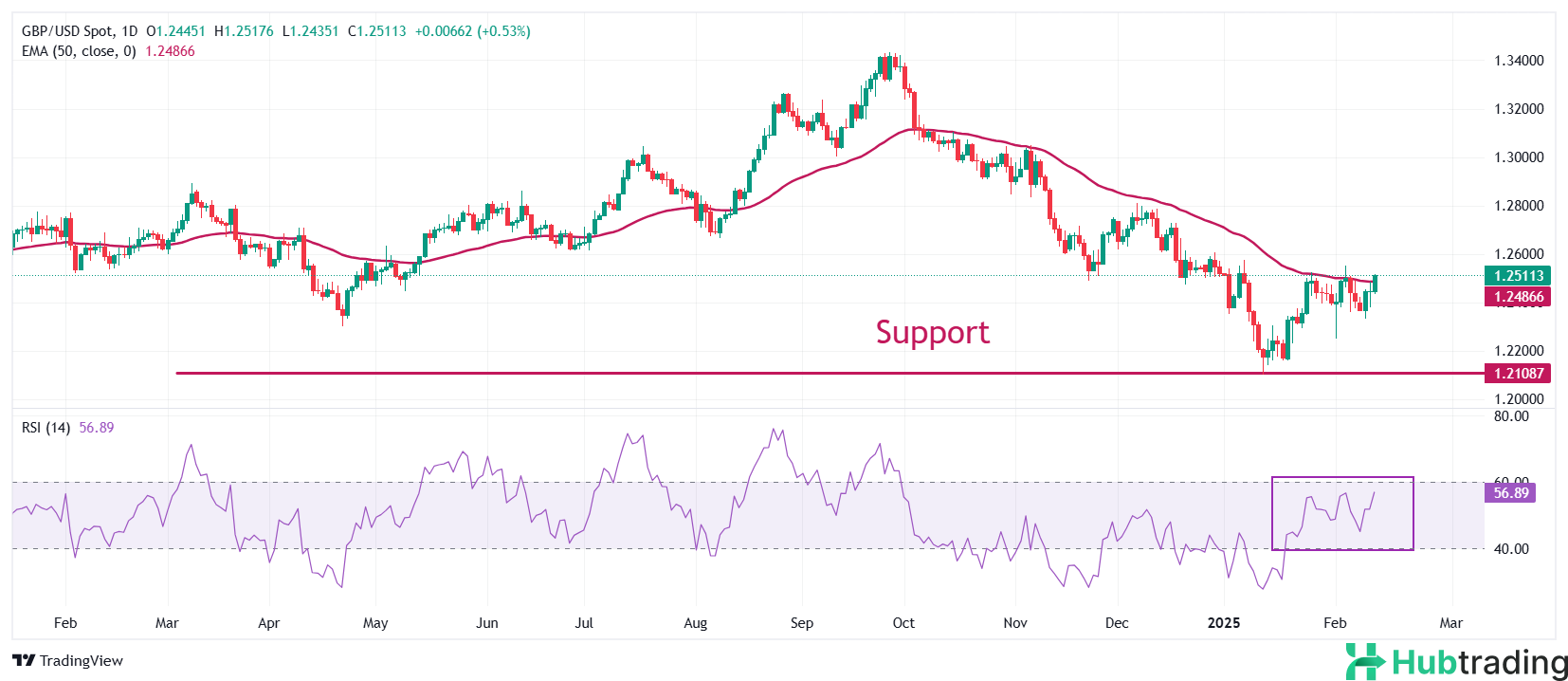- The Pound Sterling strengthens as UK GDP grows solidly in December and unexpectedly expands in Q4.
- BoE officials Greene and Pill advocate a gradual, cautious approach to rate cuts.
- Market volatility looms as US President Trump prepares to announce reciprocal tariffs.
The Pound Sterling (GBP) strengthens in Thursday’s European session, supported by strong UK GDP data and a positive market mood. The UK Office for National Statistics (ONS) reported that UK GDP grew at an annualized rate of 1.4% in Q4 2024, exceeding expectations of 1.1% and improving from 1% in Q3 (revised up from 0.9%).
On a quarterly basis, the UK economy unexpectedly expanded by 0.1%, defying expectations of a similar contraction after stagnating in Q3. Meanwhile, monthly GDP grew by 0.4% in December, significantly outperforming the forecast and previous reading of 0.1%.
Despite these positive figures, the British Pound may struggle to maintain sustained support as the Bank of England (BoE) recently halved its GDP forecast for 2025 to 0.75%. In last week’s policy meeting, the BoE cut interest rates by 25 basis points (bps) to 4.5%, emphasizing a cautious approach to future rate reductions.
BoE officials remain cautious about easing policy due to persistent inflationary pressures. BoE Chief Economist Huw Pill reiterated the need for gradual policy easing, stating that the disinflation process is not yet complete, according to Reuters. He emphasized that the BoE must work further to bring inflation down and cannot cut rates aggressively.
Similarly, BoE policymaker Megan Greene echoed a cautious and gradual approach, highlighting that inflation persistence is unlikely to fade on its own. She stressed that monetary policy must remain restrictive to ensure inflation control.
UK factory output also exceeded expectations in December. Industrial Production rose 0.5% MoM, beating the 0.2% forecast, while Manufacturing Production surged 0.7% MoM despite an expected 0.1% decline. In contrast, both indicators had contracted in November, signaling a modest rebound in the manufacturing sector.
Daily Digest Market Movers: Pound Sterling Jumps Above 1.2500 Against USD
-
The Pound Sterling climbs toward 1.2500 against the US Dollar (USD) in European trading on Thursday. The GBP/USD pair strengthens as positive developments in Russia-Ukraine peace talks offset the impact of hotter-than-expected US inflation data released on Wednesday, which fueled expectations of a prolonged Federal Reserve (Fed) rate hold.
-
US President Donald Trump confirmed that Russian President Vladimir Putin and Ukrainian President Volodymyr Zelenskiy have expressed interest in peace negotiations. Trump has directed officials to initiate truce talks, according to Reuters. This has boosted risk appetite, reducing demand for safe-haven assets like the US Dollar. Consequently, the US Dollar Index (DXY) slips toward 107.50.
-
US inflation data came in hotter than expected, with headline CPI rising to 3.0% in January, surpassing estimates of 2.9%. Core CPI, which excludes food and energy, accelerated to 3.3%, up from 3.2% in December. This has led traders to scale back expectations for a Fed rate cut in June, with CME FedWatch Tool indicating a 36% probability, down from 50% earlier in the week.
-
The next USD catalyst will be President Trump’s decision on reciprocal tariffs, expected on Thursday. According to CNBC, Trump may unveil his tariff plan before his meeting with Indian Prime Minister Narendra Modi. If implemented, reciprocal tariffs could reignite risk aversion, strengthening the US Dollar.
-
Upcoming US Data: Investors await the US Producer Price Index (PPI) data for January, scheduled for release at 13:30 GMT.
Technical Analysis: GBP/USD Retests 50-Day EMA

The Pound Sterling surges near 1.2500 against the USD, revisiting the 50-day Exponential Moving Average (EMA) after a volatile session. A daily close above the 50-day EMA would suggest a shift away from the recent bearish trend.
The 14-day RSI remains within the 40-60 range, indicating a sideways market movement.
- Support: 1.2100 (January 13 low).
- Resistance: 1.2607 (December 30 high).
A break above 1.2607 could strengthen bullish momentum, while a decline below 1.2100 may reinforce downside risks.





